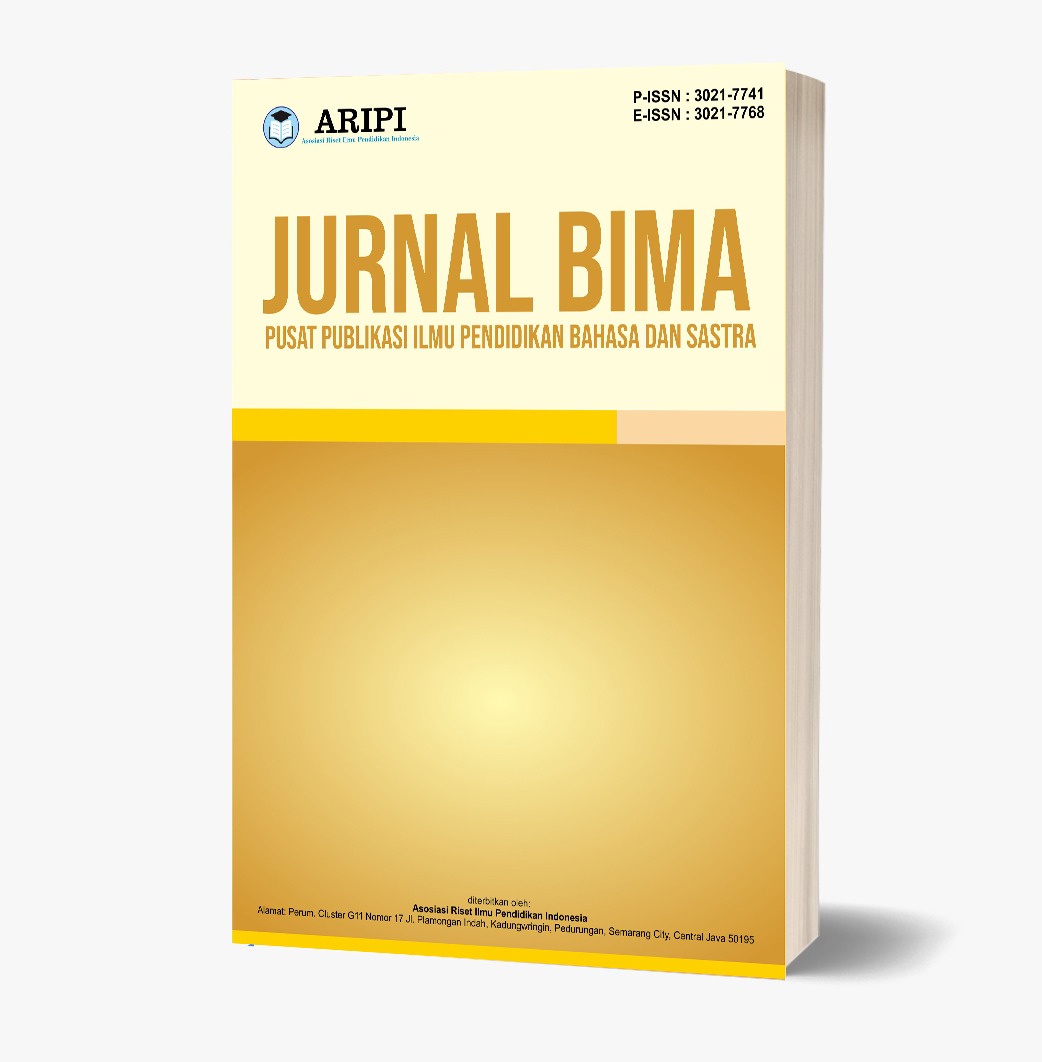An Analysis Of Teachers’ Questioning Strategies During The English Class Interaction At SMP N 1 Juwana
DOI:
https://doi.org/10.61132/bima.v1i4.347Keywords:
teachers, questioning strategies, class interactionAbstract
The objectives of this study are to identify the types of teachers’ questioning strategies, to explain the types of questioning strategies that are mostly used, and to describe teachers' reasons for using questioning strategies based on Wajnryb's theory. The subjects of this study were two English teachers SMP N 1 Juwana who taught eighth-grade students. This research used a descriptive qualitative method and the data were collected and obtained from classroom observation, recording, and interview. Research findings show that both teachers used yes/no, short-answer, display, referential, and open-ended questions during the lesson, while imaginative questions never appeared during learning. Short-answer questions and display questions are types of questions that are mostly used by teachers. Research findings show the reason teachers use questioning strategies to provoke student responses and create a pleasant classroom atmosphere so that goals can be achieved. It was proven from classroom observations that students became more active when teachers used questioning strategies during teaching and learning activities.Downloads
References
Amira Fakhriah M.N. (2020). An Analysis of Teacher Questioning Strategies and Students Responses in EFL Classroom A Case Study at Department of English Language Education, UIN Ar-Raniry, n.d
Balqis, N. 2019. An Exploration of Teacher’s Questioning Strategies in EFL Classroom (A case study at MTsN Model 1 Banda Aceh). Aceh: Ar-raniry state Islamic University Banda Aceh.
Desya, S. D. (2022). An Analysis of Teachers Questioning Strategies in Speaking Class at SMAN 1 Tanjungbumi. STKIP PGRI Bangkalan.
Ekawati, D. (2019). AN ANALYSIS OF TEACHERS’ QUESTIONING STRATEGIES DURING THE CLASSROOM INTERACTION AT SMAN 4 MAKASSAR (A Descriptive Qualitative Research).
Macaro, E., Tian, L., & Chu, L. (2020). First and second language use in English
medium instruction contexts. Language Teaching Research, 24(3), 382–402.
Saleh, M. (2016). Classroominteractionpatterns In Higher Education. English
Education Journal, 6(2), 10–16.
Siddig, B. E., & AlKhoudary, Y. A. (2018). Investigating Classroom Interaction: Teacher and Learner Participation. English Language Teaching, 11(12), 86– 92.
Sugiyono. 2018. Metode Peneltian Kuantitatif, Kualitatif dan R & D. Bandung : Alfabeta
Suherdi, D., Kurniawan, E., & Lubis, A. H. (2020). A genre analysis of research
article ‘findings and discussion’sections written by Indonesian undergraduate
EFL students. Indonesian Journal of Applied Linguistics, 10(1), 59–72.
Weiser, O., Blau, I., & Eshet-Alkalai, Y. (2018). How do medium naturalness,
teaching-learning interactions and Students’ personality traits affect
participation in synchronous E-learning? The internet and higher education, 37, 40–51.
Downloads
Published
How to Cite
Issue
Section
License
Copyright (c) 2023 Jurnal Bima : Pusat Publikasi Ilmu Pendidikan bahasa dan Sastra

This work is licensed under a Creative Commons Attribution-ShareAlike 4.0 International License.







